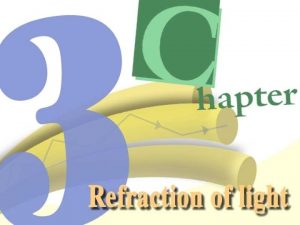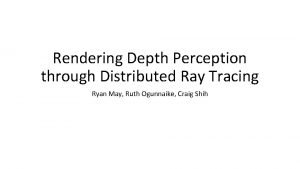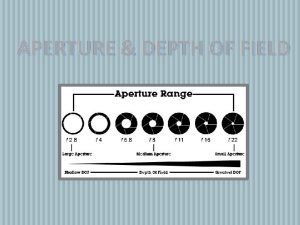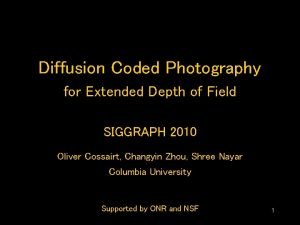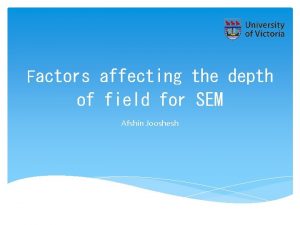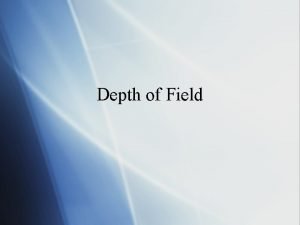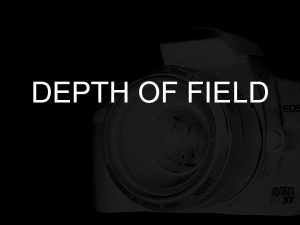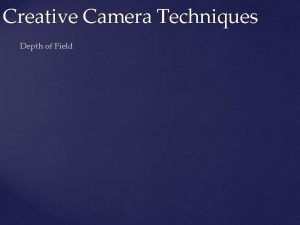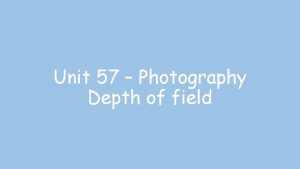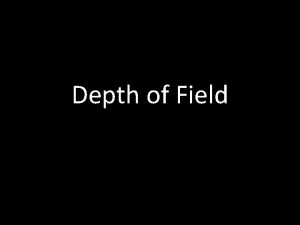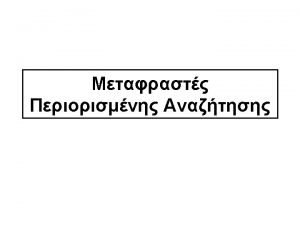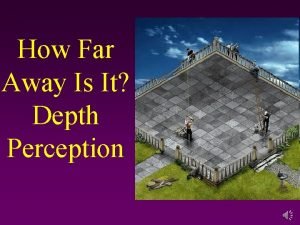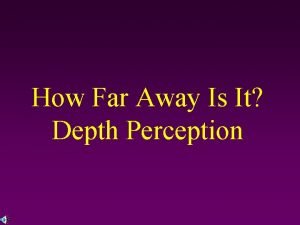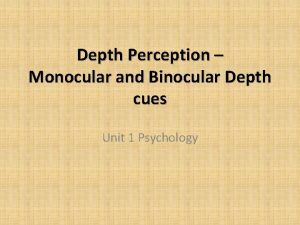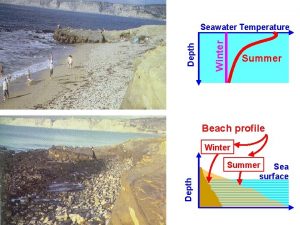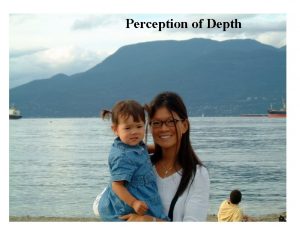Depth Of Field The Depth of Field is




















- Slides: 20

Depth Of Field

The Depth of Field is a measure of how much ‘depth’ of an image will be in focus. An image with large depth of field will have much of the image sharp and in focus. An image with a shallow or small depth of field will usually have only a small part of the image sharp and in focus. There are three things which can change the depth of field: 1. The aperture 2. The focal length of the lens used 3. How near the subject focussed on is to the camera

Aperture & Depth of Field

Camera lens focussed on the barbed-wire Large aperture (f 2) Note how the background is out of focus.

1. Changing the Aperture Camera lens focussed on the barbed-wire Small aperture (f 16). Note how whilst not completely in-focus, the background is sharper

Large aperture (f 2. 8) – Note how not all the seaweed is in focus

Small aperture (f 22)

Two photographs from the same position, both with the camera focussed on the wooden beams. Which image was made using a small aperture and which with a large aperture?

Two photographs from the same position, both with the camera focussed on the wooden beams. Which image was made using a small aperture and which with a large aperture? Small aperture (f 22) Large aperture (f 4)

Large aperture Small aperture One of the problems with using a small aperture to get maximum depth of field is that to get the correct exposure a much slower shutter speed may be required. This has led to a problem in the right hand image …

Large aperture Small aperture The right hand image was taken at a slow shutter speed (1/30) to get correct exposure and because of this the moving fishing net has become blurred (motion blur).

1. Where was the camera focussed for both images? 2. Which image was made with a small aperture and which with a large aperture?

There are two other variables which also alter the depth of field: 2. Focal length of lens Long focal length lenses (telephoto lenses) have less depth of field than short focal length lenses (wide angle lenses).

F 16, 1/250 of a second 24 mm (wide angle) lens F 16, 1/250 of a second 100 mm (telephoto) lens (To take this picture I had to stand much farther away from the car to get a similar composition)

3. Distance of subject to the camera The nearer you are to the subject which you focus on, the smaller the depth of field.

f 5. 6, 1/500 second Camera close to car f 5. 6, 1/500 second Camera further from the car f 5. 6, 1/500 second Camera even further from the car. Three images taken with the same lens and exposure, each focussed on the car.

Norman Parkinson, Portrait of Kees Van Dongen 1959 Parkinson focused on the background with shallow D. O. F

Thomas Hoepker – World Champion Muhammad Ali Hoepker accentuates Alis’s fist by using a very wide aperture to give a very shallow D. O. F

Weegee, Crowd at Coney Island Weegee used a deep D. O. F. This image was created using a small aperture.

SUMMARY Depth of field is affected by THREE factors: 1. The aperture (small apertures give more depth of field) 2. The focal length of the lens (shorter focal lengths give more depth of field) 3. The distance from the camera to the subject focussed on (the greater the distance the greater the depth of field).
 Refraction through a semi-circular glass block
Refraction through a semi-circular glass block Depth
Depth How does aperture affect depth of field
How does aperture affect depth of field Extended depth of field photography
Extended depth of field photography Sem depth of field
Sem depth of field ưu thế lai là gì
ưu thế lai là gì Tư thế ngồi viết
Tư thế ngồi viết Môn thể thao bắt đầu bằng từ đua
Môn thể thao bắt đầu bằng từ đua Hình ảnh bộ gõ cơ thể búng tay
Hình ảnh bộ gõ cơ thể búng tay Cái miệng nó xinh thế chỉ nói điều hay thôi
Cái miệng nó xinh thế chỉ nói điều hay thôi Mật thư anh em như thể tay chân
Mật thư anh em như thể tay chân Tư thế ngồi viết
Tư thế ngồi viết Thế nào là giọng cùng tên?
Thế nào là giọng cùng tên? Gấu đi như thế nào
Gấu đi như thế nào Thẻ vin
Thẻ vin Thơ thất ngôn tứ tuyệt đường luật
Thơ thất ngôn tứ tuyệt đường luật Khi nào hổ con có thể sống độc lập
Khi nào hổ con có thể sống độc lập Từ ngữ thể hiện lòng nhân hậu
Từ ngữ thể hiện lòng nhân hậu Thế nào là hệ số cao nhất
Thế nào là hệ số cao nhất Diễn thế sinh thái là
Diễn thế sinh thái là Ng-html
Ng-html
